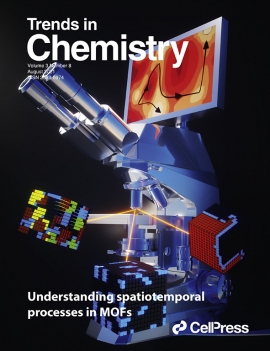A Critical Assessment on Calculating Vibrational Spectra in Nanostructured Materials
Abstract
Vibrational spectroscopy is an omnipresent spectroscopic technique to characterize functional nanostructured materials such as zeolites, metal–organic frameworks (MOFs), and metal–halide perovskites (MHPs). The resulting experimental spectra are usually complex, with both low-frequency framework modes and high-frequency functional group vibrations. Therefore, theoretically calculated spectra are often an essential element to elucidate the vibrational fingerprint. In principle, there are two possible approaches to calculate vibrational spectra: (i) a static approach that approximates the potential energy surface (PES) as a set of independent harmonic oscillators and (ii) a dynamic approach that explicitly samples the PES around equilibrium by integrating Newton’s equations of motions. The dynamic approach considers anharmonic and temperature effects and provides a more genuine representation of materials at true operating conditions; however, such simulations come at a substantially increased computational cost. This is certainly true when forces and energy evaluations are performed at the quantum mechanical level. Molecular dynamics (MD) techniques have become more established within the field of computational chemistry. Yet, for the prediction of infrared (IR) and Raman spectra of nanostructured materials, their usage has been less explored and remain restricted to some isolated successes. Therefore, it is currently not a priori clear which methodology should be used to accurately predict vibrational spectra for a given system. A comprehensive comparative study between various theoretical methods and experimental spectra for a broad set of nanostructured materials is so far lacking. To fill this gap, we herein present a concise overview on which methodology is suited to accurately predict vibrational spectra for a broad range of nanostructured materials and formulate a series of theoretical guidelines to this purpose. To this end, four different case studies are considered, each treating a particular material aspect, namely breathing in flexible MOFs, characterization of defects in the rigid MOF UiO-66, anharmonic vibrations in the metal–halide perovskite CsPbBr3, and guest adsorption on the pores of the zeolite H-SSZ-13. For all four materials, in their guest- and defect-free state and at sufficiently low temperatures, both the static and dynamic approach yield qualitatively similar spectra in agreement with experimental results. When the temperature is increased, the harmonic approximation starts to fail for CsPbBr3 due to the presence of anharmonic phonon modes. Also, the spectroscopic fingerprints of defects and guest species are insufficiently well predicted by a simple harmonic model. Both phenomena flatten the potential energy surface (PES), which facilitates the transitions between metastable states, necessitating dynamic sampling. On the basis of the four case studies treated in this Review, we can propose the following theoretical guidelines to simulate accurate vibrational spectra of functional solid-state materials: (i) For nanostructured crystalline framework materials at low temperature, insights into the lattice dynamics can be obtained using a static approach relying on a few points on the PES and an independent set of harmonic oscillators. (ii) When the material is evaluated at higher temperatures or when additional complexity enters the system, e.g., strong anharmonicity, defects, or guest species, the harmonic regime breaks down and dynamic sampling is required for a correct prediction of the phonon spectrum. These guidelines and their illustrations for prototype material classes can help experimental and theoretical researchers to enhance the knowledge obtained from a lattice dynamics study.

